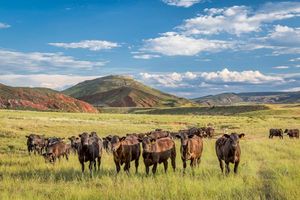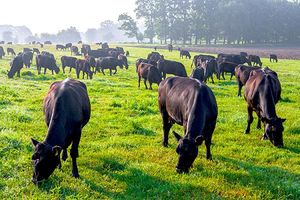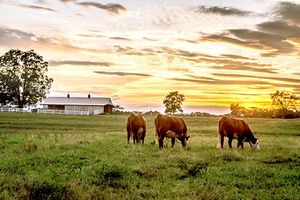6 benefits of PRF insurance for when your hay day doesn’t come
 What is Pasture, Rangeland, Forage insurance (or PRF insurance for short)? How is this policy helping producers and farmers when Mother Nature decides she wants to try out her very dry sense of humor by withholding the rain? We’re ready to explain it all and share six benefits of having a PRF insurance policy.
What is Pasture, Rangeland, Forage insurance (or PRF insurance for short)? How is this policy helping producers and farmers when Mother Nature decides she wants to try out her very dry sense of humor by withholding the rain? We’re ready to explain it all and share six benefits of having a PRF insurance policy.
What is PRF insurance?
Pasture, Rangeland, Forage insurance is a federal area-based program designed to help protect a producer’s operation from forage loss risks due to lack of precipitation on acres grown with the intended use of grazing or haying. Coverage is not based on individual farms or ranches or specific weather stations but rather on local rainfall indexes (more on that later), and producers are not required to insure all of their acres.
Top six benefits of having PRF insurance with ProAg:
1. PRF insurance policies include protection for haying and grazing.
The PRF program was designed primarily for cattle producers who raise their own feed crops (for example, pasture, alfalfa and other forage crops). The ultimate goal is to help producers cover their increased costs for feed, destocking, depopulating or other actions which can be incurred during dry periods. If there is a lack of precipitation, PRF enables you to buy supplemental feed.
Important note: PRF is not drought insurance. It does not insure against abnormally high temperatures or windy conditions. While a drought may cause a decline in the index value to the point that an indemnity payment is issued to eligible insured producers, a drought being declared in a state, county or area does not by itself trigger an indemnity payment.
2. It’s more than just insurance — it’s a risk management tool.
Weather events can bring several expensive challenges. PRF insurance acts as a risk management tool that can help producers sustain their herd, when they may otherwise have had to resort to herd liquidation just to make ends meet. Plus, lenders like to see producers using crop insurance as part of an overall risk management strategy.
3. This policy is completely self-sufficient (no need to file a notice of loss).
The PRF program will issue any indemnity payments automatically based on the producer’s chosen grid area rainfall index (it’s usually sent around four months after the end of the covered index interval). A rainfall index is based on National Oceanic and Atmospheric Administration (NOAA) data.
The location’s weather data comes from weather stations established and monitored by NOAA, and the program’s location grid system for rainfall data goes off 0.25-degree increments in latitude and longitude — equal to approximately 17 square miles. Each grid’s rainfall index is ultimately what dictates whether conditions justify a PRF payment. Rainfall data is compared to the same data going back to 1948 in order to determine whether payments are justified.
 4. Coverage options are very customizable.
4. Coverage options are very customizable.
Available in two-month increments, chosen for when precipitation is most important to your operation, PRF policyholders can select a coverage level from 70% to 90% in 5% increments. Producers select a productivity factor to match the amount of protection to the value that best represents the operation and the productive capacity of the producer’s acres. The factor is between 60% to 150%.
5. Buy now and pay a whole year later.
Policyholders don’t have to pay insurance premium when they sign up. They’re billed the following year in September. Plus, more than half of the PRF premium cost is subsidized by the federal government.
6. ProAg has decision support tools to help producers see the full-picture quote.
ProAg agents have a straightforward resource at their fingertips to help producers make an informed decision. The my.ProAg.com interface assembles the data variables (including USDA PRF grid information) and allows the producer to see potential premium costs before deciding on coverage levels and timing.
ProAg’s quoting tool also houses the rainfall index’s historical data so agents can go back over the last 30 or 40 years within a grid and print out an accurate quote sheet. That means producers know premiums up-front and can budget for that expense.
Put your ProAg agent to work on your custom PRF insurance quote!
Interested in adding PRF coverage to your operation or have more questions? Contact your local ProAg agent or regional specialist.


